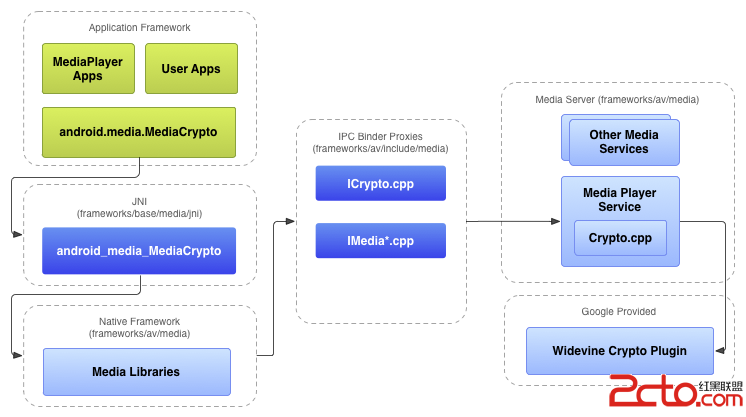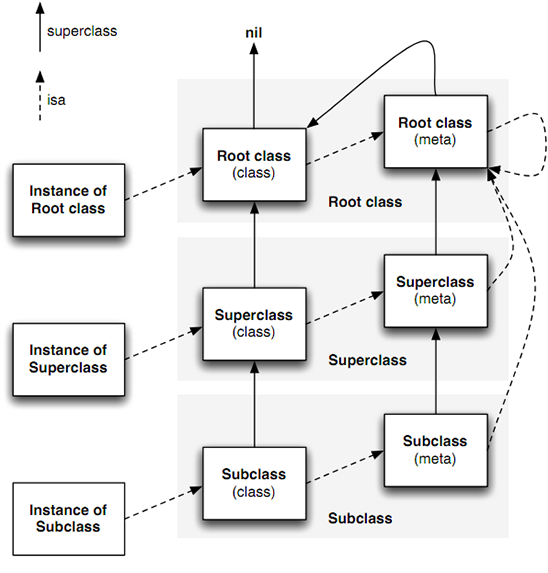編輯:關於Android編程
This document introduces Widevine DRM security levels and certification requirements. It explains how to integrate and distribute Widevine DRM for your product. Android provides the Widevine DRM solution with a royalty-free license and we recommend that you use it for your protected playback solution.
Availability of rich digital content is important to users on mobile devices. To make their content widely available,Android developers and digital content publishers need a consistent DRM implementation supported across the Androidecosystem. In order to make that digital content available on Android devices and to ensure that there is at leastone consistent DRM available across all devices, Google provides Widevine DRM for free on compatible Android devices.On Android 3.0 and higher platforms, the Widevine DRM plugin is integrated with the Android DRM framework and useshardware-backed protection to secure movie content and user credentials.
The content protection provided by the Widevine DRM plugin depends on the security and content protection capabilities of the underlying hardware platform. The hardware capabilities of the device include hardware secure boot to establish a chain of trust of security and protection of cryptographic keys. Content protection capabilities of the device include protection of decrypted frames in the device and content output protection via a trusted output protection mechanism. Not all hardware platforms support all the above security and content protection features. Security is never implemented in a single place in the stack, but instead relies on the integration of hardware, software, and services. The combination of hardware security functions, a trusted boot mechanism, and an isolated secure OS for handling security functions is critical to provide a secure device.
Android 3.0 and higher platforms provide an extensible DRM framework that lets applications manage protected content using a choice of DRM mechanisms. For application developers, the framework offers an abstract, unified API that simplifies the management of protected content. The API hides the complexity of DRM operations and allows a consistent operation mode for both protected and unprotected content across a variety of DRM schemes. For device manufacturers, content owners, and Internet digital media providers the DRM framework plugin API provides a means of adding support for a DRM scheme of choice into the Android system, for secure enforcement of content protection.
Note: We recommend that you integrate the Widevine solution as it is already implemented and ready for you to use.
Built on top of the Android DRM framework, the Widevine DRM plugin offers DRM and advanced copy protection features on Android devices. Widevine DRM is available in binary form under a royalty free license from Widevine. The Widevine DRM plugin provides the capability to license, securely distribute, and protect playback of multimedia content. Protected content is secured using an encryption scheme based on the open AES (Advanced Encryption Standard). An application can decrypt the content only if it obtains a license from the Widevine DRM licensing server for the current user. Widevine DRM functions on Android in the same way as it does on other platforms. Figure 1 shows how the WideVine Crypto Plugin fits into the Android stack:

Figure 1. Widevine Crypto Plugin
The following sections go over the different security levels that Widevine supports and the requirements that your product must meet tosupport Widevine. After reading the information, you need to determine the security level for your target hardware, integration, and Widevine keybox provisioning requirements.
To integrate and distribute Widevine DRM on Android devices, contact your Android technical account manager to begin Widevine DRM integration.We recommend you engage early in your device development process with the Widevine team to provide the highest level of content protection on the device. Certify devices using the Widevine test player and submit results to your Android technical account manager for approval.
Security is never implemented in a single place in the stack, but instead relies on the integration of hardware, software, and services. The combination of hardware security functions, a trusted boot mechanism, and an isolated secure OS for handling security functions is critical to provide a secure device.
At the system level, Android offers the core security features of the Linux kernel, extended and customized for mobile devices. In the application framework, Android provides an extensible DRM framework and system architecture for checking and enforcing digital rights. The Widevine DRM plugin integrates with the hardware platform to leverage the available security capabilities. The level of security offered is determined by a combination of the security capabilities of the hardware platform and the integration with Android and the Widevine DRM plugin. Widevine DRM security supports the three levels of security shown in the table below.
*Device implementations may use a trusted bootloader, where in the bootloader is authenticated via an OEM key stored on a system partition.
In this implementation Widevine DRM keys and decrypted content are never exposed to the host CPU. Only security hardware or a protected security co-processor uses clear key values and the media content is decrypted by the secure hardware. This level of security requires factory provisioning of the Widevine key-box or requires the Widevine key-box to be protected by a device key installed at the time of manufacturing. The following describes some key points to this security level:
Device manufacturers must provide a secure bootloader. The chain of trust from the bootloader must extend through any software or firmware components involved in the security implementation, such as the ARM TrustZone protected application and any components involved in the enforcement of the secure video path. The Widevine key-box must be encrypted with a device-unique secret key that is not visible to software or probing methods outside of the TrustZone.The Widevine key-box must be installed in the factory or delivered to the device using an approved secure delivery mechanism.Device manufacturers must provide an implementation of the Widevine Level 1 OEMCrypto API that performs all key processing and decryption in a trusted environment.In this security level, the Widevine keys are never exposed to the host CPU. Only security hardware or a protected security co-processor uses clear key values. An AES crypto block performs the high throughput AES decryption of the media stream. The resulting clear media buffers are returned to the CPU for delivery to the video decoder. This level of security requires factory provisioning of the Widevine key-box or requires the Widevine key box to be protected by a key-box installed at the time of manufacturing. The following list describes some key requirements of this security level:
Device manufacturers must provide a secure bootloader. The chain of trust from the bootloader must extend through any software or firmware components involved in the security implementation, such as the TrustZone protected application.The Widevine key-box must be encrypted with a device-unique secret key that is not visible to software or probing methods outside of the TrustZone.The Widevine key-box must be installed in the factory or delivered to the device using an approved secure delivery mechanism.Device manufacturers must provide an implementation of the Widevine Level 2 OEMCrypto API that performs all key processing and decryption in a trusted environment.Device manufacturers must provide a bootloader that loads signed system images only. For devices that allow users to load a custom operating system or gain root privileges on the device by unlocking the bootloader, device manufacturers must support the following: Device manufacturers must provide a bootloader that allows a Widevine key-box to be written only when the bootloader is in a locked state.The Widevine key-box must be stored in a region of memory that is erased or is inaccessible when the device bootloader is in an unlocked state.This security level relies on the secure bootloader to verify the system image. An AES crypto block performs the AES decryption of the media stream and the resulting clear media buffers are returned to the CPU for delivery to the video decoder.
Device manufacturers must provide a bootloader that loads signed system images only. For devices that allow users to load a custom operating system or gain root privileges on the device by unlocking the bootloader, device manufacturers must support the following:
Device manufacturers must provide a bootloader that allows a Widevine key-box to be written only when the bootloader is in a locked state.The Widevine key-box must be stored in a region of memory that is erased or is inaccessible when the device bootloader is in an unlocked state.
Widevine DRM Provision:
Factory Provision 單個設備需要唯一硬件識別號碼單個設備需要生成唯一的keybox並寫入設備keybox provision在設備制造期間生成並寫入設備制造商需要提供軟件支持,以存取相關設備信息Google提供API定義,設備制造商實現該接口 Field Provision keybox provision通過OTA方式寫入設備 Android面試之JAVA基礎Junit了解
Android面試之JAVA基礎Junit了解
什麼叫Junit Junit是一個java單元測試框架 是 對程序進行白盒測試 一般來說要對一個方法進行測試其結果 可以寫一個main入口 然後調用其方法來進行測
 Android自定義View之仿QQ側滑菜單實現
Android自定義View之仿QQ側滑菜單實現
最近,由於正在做的一個應用中要用到側滑菜單,所以通過查資料看視頻,學習了一下自定義View,實現一個類似於QQ的側滑菜單,順便還將其封裝為自定義組件,可以實現類似QQ的側
 Objective-C中的Runtime
Objective-C中的Runtime
前言Runtime是一套比較底層的純C語言API,包含了很多底層的C語言API。在我們平時編寫的OC代碼中,程序運行時,其實最終都是轉成了Runtime的C語言代碼。Ru
 九點(九宮格)式手勢解鎖自定義view
九點(九宮格)式手勢解鎖自定義view
周末閒著沒事,寫了個手勢解鎖的view,實現起來也蠻快的,半天多一點時間就完事。把源碼和資源貼出來,給大家分享,希望對大家有用。效果,就跟手機上的九點手勢解鎖一樣,上個圖